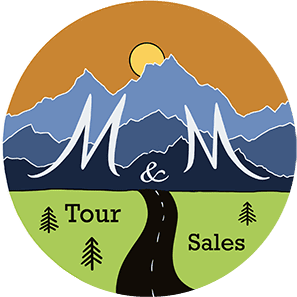The Best of Alaska – Learning about Glaciers
The Best of Alaska – Learning about Glaciers
Glaciers are very interesting but if you’re from a place without glaciers, you may know very little about them. Don’t feel bad. In today’s blog, I am going to teach you all about glaciers in this very popular blog series called, The Best of Alaska!
What is a glacier?
A glacier is a really big chunk of ice. However, a glacier is not an iceberg. An iceberg is a chunk of ice that used to be part of a glacier, broke off, and then floated away. Icebergs can be big but glaciers are far bigger.
A glacier’s ice forms when snowfall accumulates from year to year. As fresh snow falls, it compresses the old snow into very dense ice. The ice becomes so dense that it reflects the light’s blue wavelength, which is why glaciers look blue. All water flows downhill, even frozen water, so the glacier slowly moves down the mountain like a river made of molasses. When you have very dense ice flowing downhill, you have a glacier. It’s as simple as that!
Glacial features explained
If you go on a glacier tour in Skagway, you are going to see all sorts of glacial features. If you can’t identify these glaciers, you’re just going to see a big chunk of blue ice and wonder what all of the features are called. That’s no fun. The following is like a glossary of glacial features that you can read ahead of time so you’re able to identify each and every one. All of the other people on the tour are going to think you’re very smart.
Crevasse – A crevasse is a deep open crack in a glacier. Falling into a crevasse usually results in becoming frozen in ice for thousands of years. When you’re eventually found and thawed out, you come back to life and star in a movie about how funny your ways are compared to everyone else’s. Either that or you look like a piece of old leather.
Moulin – A moulin is a vertical shaft in a glacier caused by water percolating upwards. Falling into a moulin is no better than falling into a crevasse. You should avoid both scenarios.
Serac – Seracs are pinnacles of ice on a glacier. There are usually a lot of them in one general area. You can’t go waltzing around on seracs like you own the place, so don’t even try. Just enjoy the view and avoid death.
Moraine – A glacial moraine is a mass of rocks and sediment carried along by the glacier and deposited on the ground. Lateral moraines are formed along the side of the glacier and terminal moraines are deposited at the terminus (end) of the glacier. Moraines are piles of loose boulders, so unless you enjoy being buried and crushed by giant rocks, stay off of moraines.
Ice caves – Sometimes meltwater causes a large area within a glacier’s terminus to open, creating a cave. Because the glacier is made of ice, it’s called an ice cave. Very clever. Ice caves are known to be unstable, so if you just have to get some pictures from inside the ice cave for your Instagram, make sure you bring a helmet that can withstand one million tons of ice.
The Best of Skagway – Now you’re a glacier expert
Congratulations! You now know everything there is to know about glaciers. If you want to see the Best of Skagway on your cruise, you should take a helicopter and land on a glacier. There, you will all sorts of glacial features and know what to call them. Won’t that be something to remember!
All Categories




